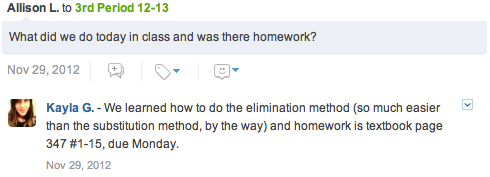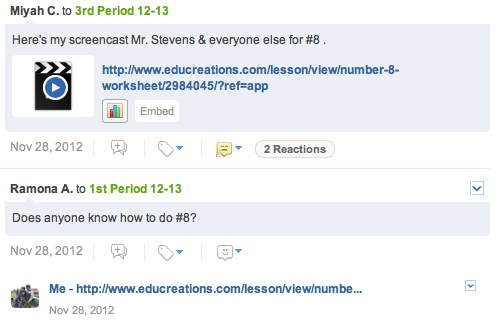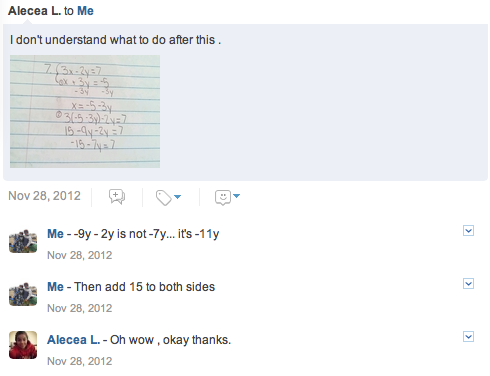As a proven example, we can look at the unit that my students are currently learning about - solving systems of linear equations (SOLE) using the elimination and substitution method. To give you a peek into my classroom structure, we do a warm-up to get our minds into the proper frame for the day, go through the lesson, and get into about 3 problems. Yes, ladies and gentlemen, three whole problems from start to finish. That may earn a "what in the world is he doing during the 51 minutes of class" type of reaction, but consider the learning that needs to take place. In order for students to comprehend this brand new concept, they need a five-step process memorized and demonstrated slowly a number of times. With that being said, there are a number of variations of those problems that the students will see. Three is never enough. Never. Ever. But we must keep calm and teach on. District benchmarks are coming. CST exams are coming. Just keep going.
Unfortunately, to compensate for the fact that the students just don't have enough time to practice this new concept during class, they have something that we like to call "homework" that the progressive education minds tend to oppose. I'm ok with their opinion, and will certainly listen to a rebuttal, but my students need time to practice what was learned. Without the freedom to teach at a pace that my students would actually benefit from, homework is the only way that they can get any sort of routine memorized for the 5 steps used during the substitution or elimination methods for SOLE (or most of the California Algebra 1 standards, for that matter).
One of the major arguments against homework is that you send the student home without the expert. The teacher is no longer in the student's environment to assist with the problems, thereby compounding and creating a phobia of the standard. Introduce a little thing called technology and that issue is resolved immediately. Recently, I gave the students a homework assignment (oops, sorry). They struggled. Here's how we helped each other:
| A student was absent, asked the class what she missed, and another student helped her out... how thoughtful. It's all about making students accountable for each other's success. | This student decided to help the class by doing a screencast. Wouldn't it be nice if your students were teaching your students? | This student made a simple mistake that she realized as soon as she read the response. |
This allows me to ask the next question - is this really homework in the traditional sense if I'm still available?
The students know that they can do a number of things to ask for help:
Google Voice me
Get onto Edmodo and ask me there
Go to my website for flip videos or further support
When it comes down to it, it is about removing the opportunities for objections. Homework has been dubbed a teaching faux pas because of its very nature to send the students off into a disconnected realm while they mull their responses and curse their instructors. With a connected classroom, there is no objection possible - I am as available as you want me to be. If, for some reason I am not available, your classmates are.
I'm certainly not trying to sway the naysayers of homework distribution to my side of the spectrum, nor am I attempting to influence the assigning of more homework for the sake of more homework. However, there is a place for extra practice, as long as there is support that is available. As long as I am able to support my students outside of the classroom at the drop of a hat, I will assign homework to allow them the time to practice what they have learned. Indeed, I will keep calm and teach on.
John Stevens
@appsintheclass
@jstevens009
[email protected]
mrstevens.weebly.com





 RSS Feed
RSS Feed
